The World of Ottomans

An ottoman is often an underappreciated living room staple. It is making a huge come back. An ottoman is also sometimes called a hassock, footstool or pouf. This piece of furniture is actually a multipurpose gem: It can be used as a cocktail table substitute, a decorative footstool for a sofa, or space-saving storage. It can become an accent piece at the end of your bed or a great piece of furniture in an entry with a fabulous piece of art hung above it.
We can reupholster your existing one or build you one from an inspirational photo. Send us your picture and we will send you a quote.
Ottomans can be cubed and made in many sizes. You can add a wood base that is either stained or painted. Drum ottomans are fun and can be tucked under a console table to be brought out for extra seating when needed. Longer ottomans (benches) can be placed at the end of a bed. The style of legs has many possibilities from chrome, to acrylic to wood. You can even hide the legs with a skirt. What you choose depends on where and how you will use it and the available space.
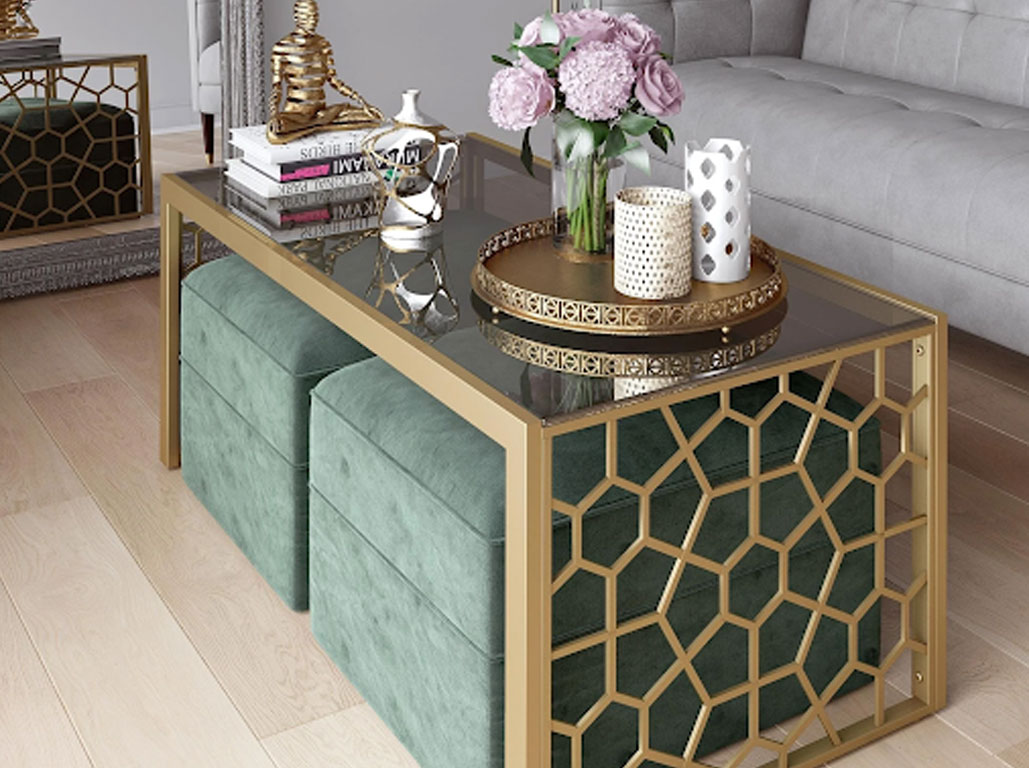
Another variety of a footstool is an “X-bench”. These are great done in pairs. You will need to think about the type of pattern you want to use on this piece as the legs are upholstered as well as the seat. This can sometimes prove to be challenging when choosing certain fabrics.
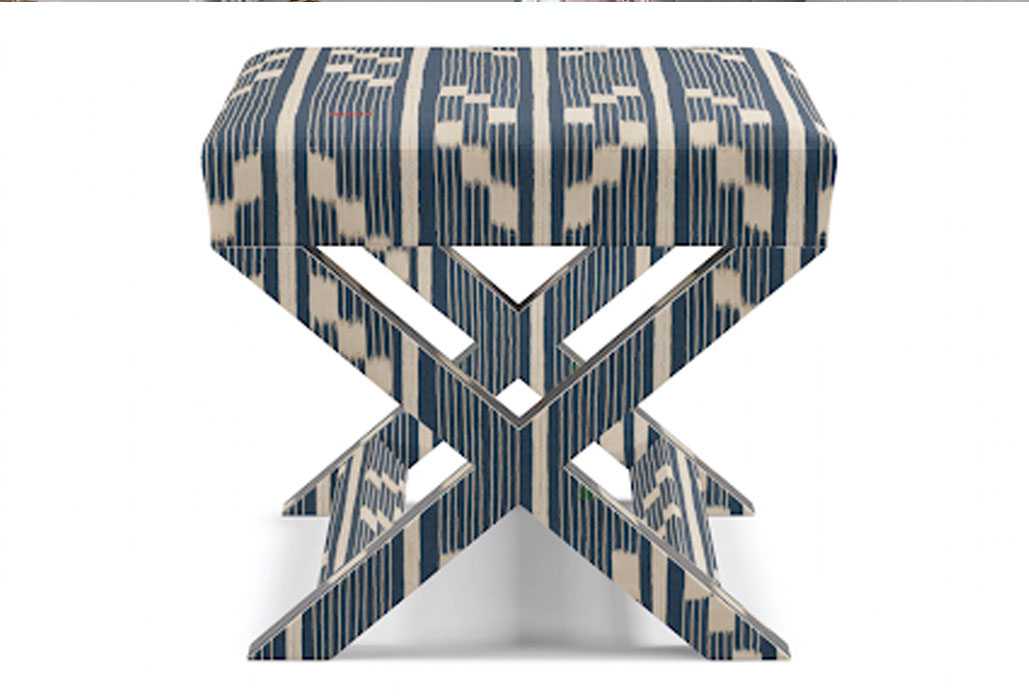
In choosing a fabric perhaps try something adventurous in pattern and color – what may be garish on a large scale piece of furniture may be spectacular on an ottoman.
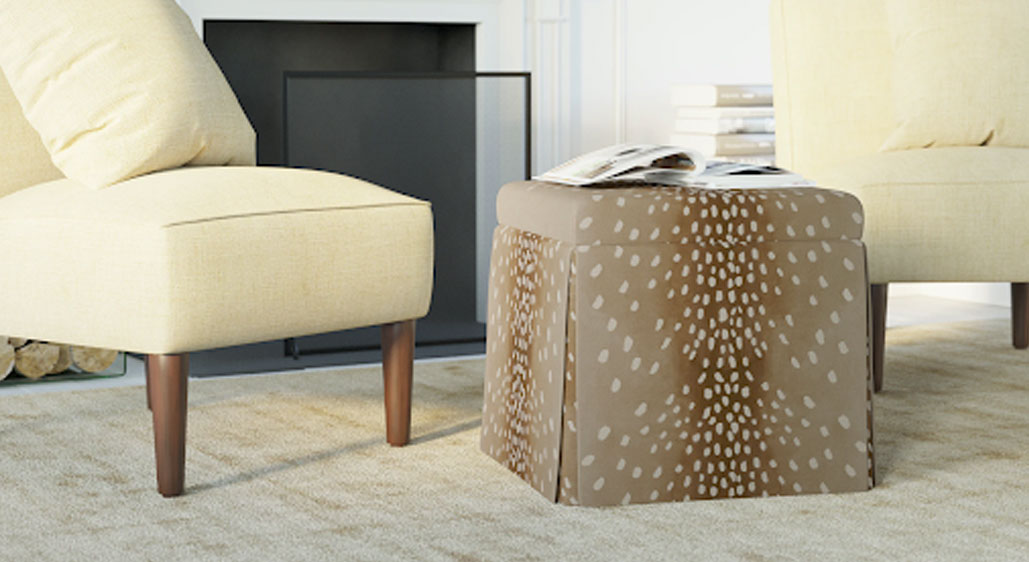
If you need a multi-purpose piece of furniture and ottoman is just what you need. One of the best things about an ottoman is that it can typically be moved easily and used as both a table and for seating. But if you want to make it even more versatile, choose an ottoman with a lid that lifts off for storage. This is ideal in a family room for magazines, books, games, in a hallway for gloves and scarves, or a bedroom for extra blankets, etc.
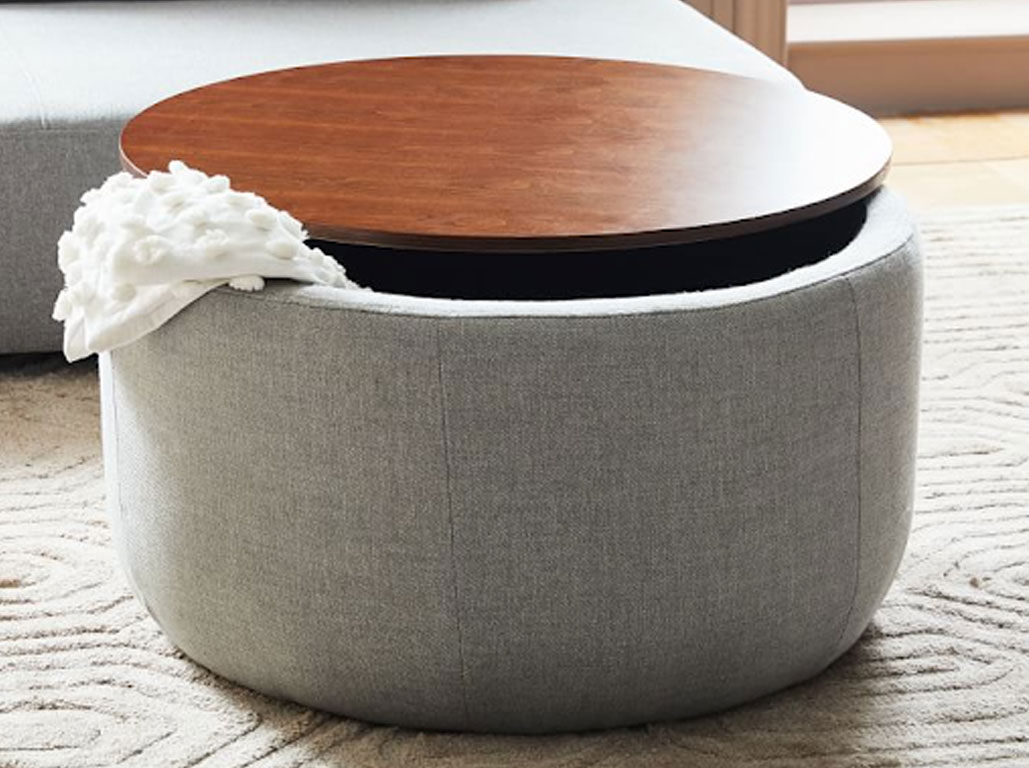
When picking your fabric do consider that the ottoman is seen from all sides. If possible make the size of the ottoman fit the pattern repeat of your fabric so that from all sides it is aesthetically pleasing.
You do need to think about durability as often an ottoman is used as a footstool or coffee table. That brings me to a point of durability. It is best to pick a heavy upholstery fabric. High-performance fabrics are a good choice because they have higher manmade fiber content. You can always treat your fabric with Scotchgard or Guardsmith Care products to help protect the fabric.
Is an ottoman the same as a poof? Many people are confused and sometimes use the wrong terminology in specifying what they are wanting. I thought we should touch on this. A poof often gets compared to ottoman because their uses are similar. And while their uses can overlap, i.e. they can be sat on, poufs and ottomans are different pieces of furniture and are designed to be used for different things. For instance, some people opt to use ottomans in lieu of a coffee table, but poufs wouldn’t function well in that role. So how do you tell what is an ottoman and what is a Poof? Let me simplify it. What sets poufs apart from their ottoman counterparts is that they’re made of only fabric and stuffing, and they don’t have any legs. So when specifying be sure you are using the correct terminology. We can make you a Poof if you are looking to have one made or reupholstered just give me a call.
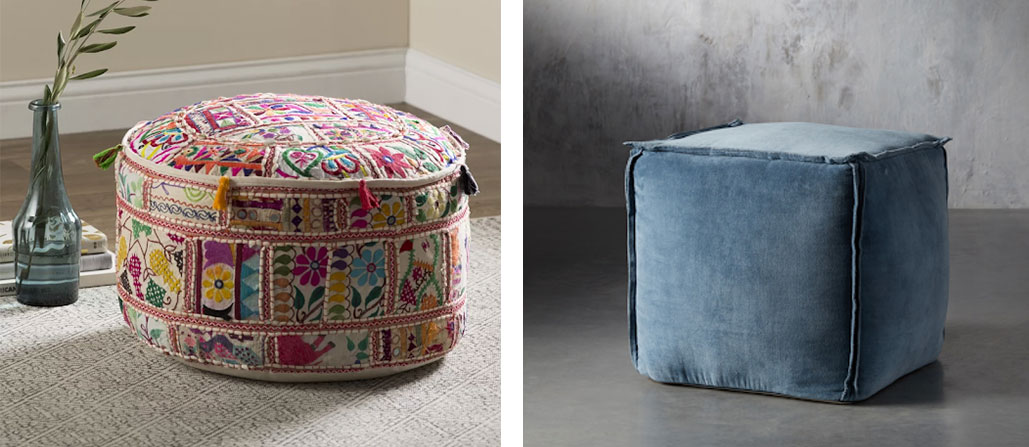
So why an ottoman and not a coffee table you might ask? Not that long ago before Hulu and Facebook, a standard in every living room was a coffee table. Our families and our guests needed a place to put their drinks and snacks. Well, that still hasn’t changed. What we do long for is a multifunctional piece of furniture. One that can have a tray put on top for our drinks or cleared off for us to rest our feet on while scrolling through Facebook or watching our favorite series on the internet.
An ottoman also lets us have another place to use something softer than wood or metal in the space. A coffee table is more low maintenance, it just doesn’t do double duty like an ottoman does in adding extra seating to accommodate when you need additional seating for guests. And don’t forget the added storage that some of them have. An ottoman also takes away the sharp edges that are a magnet for toddling children to hurt themselves on.
Let’s review the points in making the decision to go with an ottoman.
- Make sure to measure the sofa or the chair to get the correct dimensions on the ottoman. It is best to sit on the couch or chair to determine the height. When you sit on the sofa or chair you sink down into the cushions. Making the ottoman an inch or two shorter than the height of the sofa or chair when it is not being sat on is best. This height is somewhere between 15” and 22”.
- Consider your fabric choice. Pick something with higher manmade fiber content, as opposed to a natural fiber when looking for durability and stain resistance. Synthetic fibers don’t hold onto stains as much as a natural fiber
- If you will be wanting to put a tray on top then choose an ottoman with a relatively flat top
- Pick a fabric that will contrast with the sofa in color or pattern so that it is not so matchy-matchy. It’s a great time to be creative. Think of it as you would when selecting fabrics for throw pillows. You want something that adds color, texture, and interest.
With all of that in mind, find an inspirational photo and call me and I can give you a quote and your client will be on their way to kicking back and relaxing in your perfectly appointed space.





